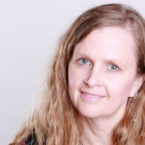Abstract
Purpose of Review
Part 1 of this review on secondary osteoporosis of childhood was devoted to understanding which children should undergo bone health monitoring, when to label a child with osteoporosis in this setting, and how best to monitor in order to identify early, rather than late, signs of bone fragility. In Part 2 of this review, we discuss the next critical step in deciding which children require bisphosphonate therapy. This involves distinguishing which children have the potential to undergo “medication-unassisted” recovery from secondary osteoporosis, obviating the need for bisphosphonate administration, from those who require anti-resorptive therapy in order to recover from osteoporosis.
Recent Findings
Unlike children with primary osteoporosis such as osteogenesis imperfecta, where the potential for recovery from osteoporosis without medical therapy is limited, many children with secondary osteoporosis can undergo complete recovery in the absence of bisphosphonate intervention. Over the last decade, natural history studies have unveiled the spectrum of this recovery, which spans overt deterioration (i.e., incident vertebral and non-vertebral fractures and declines in bone mineral density (BMD)), to spectacular reclamation of BMD, and complete restoration of normal vertebral dimensions after spine fractures. The fact that reshaping of vertebral bodies following fractures is growth-dependent underscores the need to identify and treat those at risk for permanent vertebral deformity in a timely fashion.
Summary
The decision to treat a child with a bisphosphonate hinges on distinguishing bone fragility from typical childhood fractures, and determining the potential for medication-unassisted recovery following an osteoporotic fragility fracture. While improvements in BMD are a well-known sign of recovery, restitution of bone structure is also a key indicator of recuperation, one that is unique to childhood, and that plays a pivotal role in the decision to intervene or not.
Researchers
-
Leanne Ward
Senior Scientist, CHEO Research Institute

